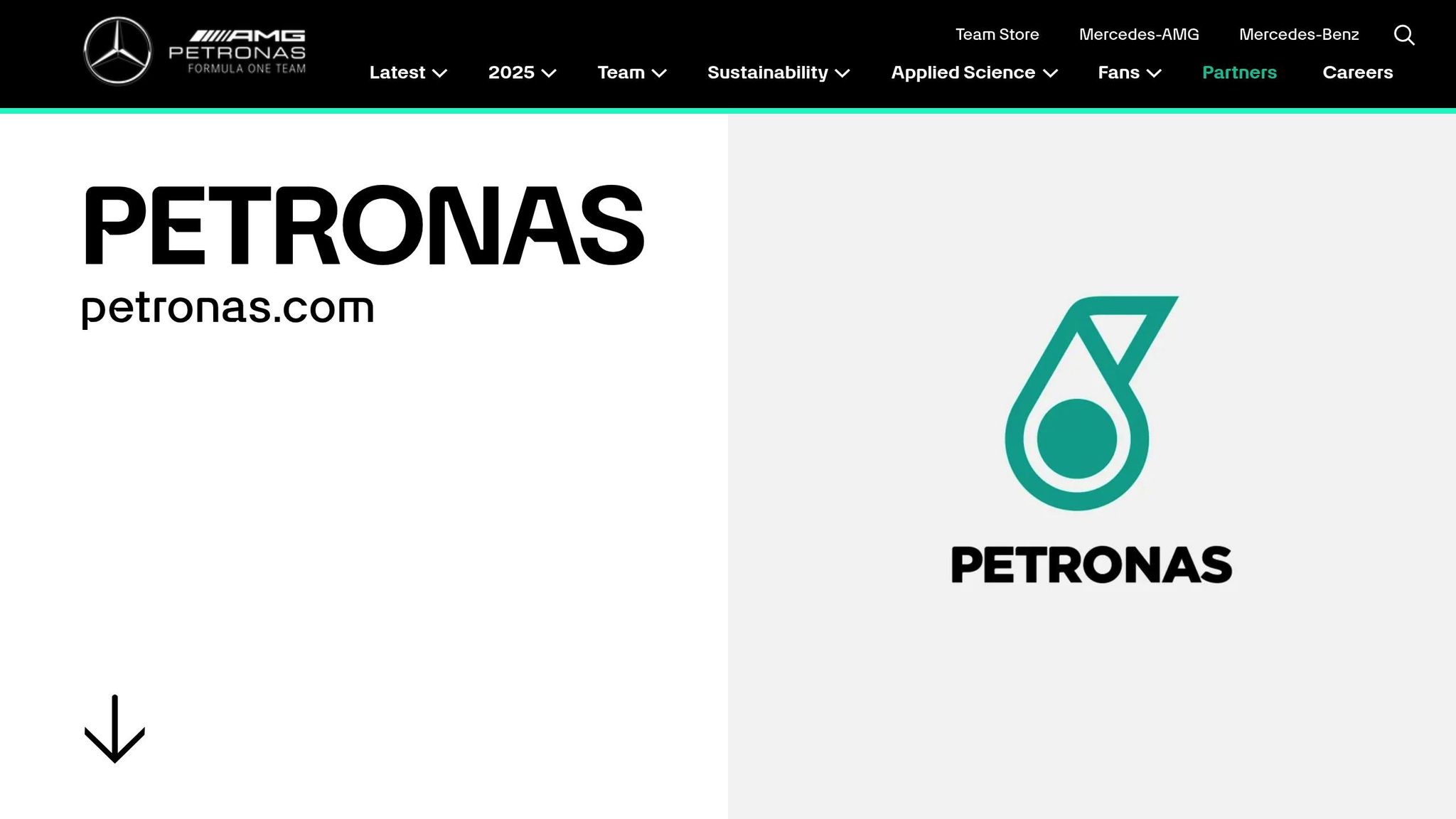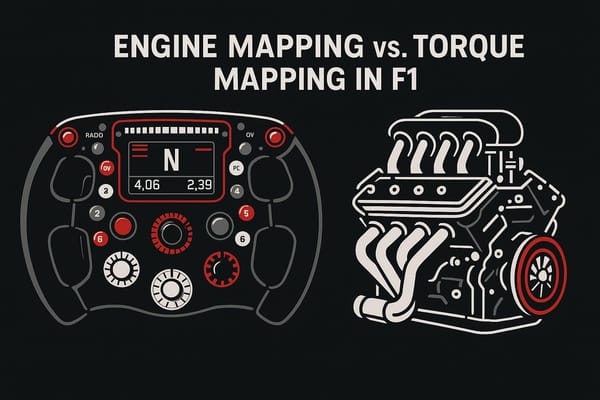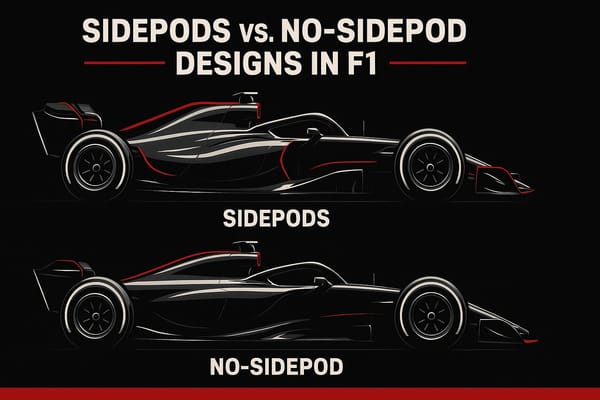How MGU-K Works in F1 Power Units
Explore how the MGU-K enhances performance in F1 power units by recovering braking energy and optimizing acceleration while adhering to strict regulations.

The MGU-K (Motor Generator Unit-Kinetic) is a key part of modern F1 power units. It converts braking energy into electrical energy, stores it, and redeploys it for extra power during acceleration. This boosts performance and improves fuel efficiency. Here’s a quick summary of how it works:
- Energy Recovery: Captures kinetic energy during braking and converts it into electrical energy.
- Energy Storage: Stores the energy in the Energy Store (ES) for later use.
- Power Boost: Provides up to 120 kW (160 hp) of extra power for overtaking or exiting corners.
- Efficiency: Reduces fuel consumption by recycling energy.
- Regulations: Operates under strict FIA limits, including a 33-second maximum deployment per lap.
The MGU-K works alongside the MGU-H and engine to improve overall power unit performance and energy management. It’s a critical component of F1’s hybrid systems, balancing speed with energy efficiency.
Power Unit 101 with PETRONAS: MGU-K, EXPLAINED!

MGU-K Operation Principles
The MGU-K plays a key role in converting braking energy into electrical power, which can then be used to enhance acceleration.
Braking Energy Recovery
When the brakes are applied, the MGU-K functions as a generator, transforming the car's kinetic energy into electrical energy. This recovered energy is then managed efficiently, ensuring it's ready for immediate use when needed.
Power Storage and Deployment
The electrical energy captured during braking is stored in the Energy Store (ES). When the car requires an extra boost, the MGU-K switches to motor mode, delivering the stored energy directly to the drivetrain for added performance.
FIA Power Regulations

Strict regulations from the FIA govern both the power output and energy deployment of the MGU-K. Teams must navigate these limits carefully, balancing energy recovery and deployment strategies to stay competitive while adhering to the rules.
MGU-K and Power Unit Integration
Engine Integration System
The MGU-K connects to the engine's crankshaft via a precise gear system that serves two critical functions: delivering power during acceleration and recovering kinetic energy during braking. This setup allows the MGU-K to operate at speeds of up to 50,000 RPM, generate 200 Nm (148 lb-ft) of torque, and add an extra 120 kW (160 hp) to the power unit’s overall output. Honda's engineering efforts have concentrated on ensuring the MGU-K can recover and deploy energy at maximum capacity, even at lower engine speeds. This enhancement improves drivability and performance across the entire RPM range, making the system not only more powerful but also more responsive. Additionally, this integration works seamlessly with the MGU-H to optimize overall power unit functionality.
MGU-K and MGU-H Interaction
Once the system's reliability was established, the focus shifted to fine-tuning energy recovery and deployment. Engineers worked to optimize the flow of energy between the MGU-K, MGU-H, and the battery. The system is designed to operate within strict parameters that maximize energy storage and allow for strategic deployment during races:
| Parameter | Specification |
|---|---|
| Maximum Power Output | 120 kW (160 hp) |
| Maximum Deployment Time | 33 seconds per lap |
| Maximum Torque | 200 Nm (148 lb-ft) |
| Minimum Speed Requirement | 100 km/h (62 mph) |
This configuration allows teams to store up to double the recovered energy, providing a tactical advantage during races. The result is a power unit that delivers greater output and improved energy efficiency compared to designs from 2014. This level of integration marks a significant step forward in energy management, paving the way for future advancements in F1 power unit technology.
Technical Limits and Solutions
Power Management Systems
F1 teams rely on advanced power management systems to ensure the MGU-K operates effectively within FIA regulations. These systems balance energy recovery and deployment, adhering to strict limits of 120 kW (160 hp) and 200 Nm (148 lb-ft).
Modern F1 steering wheels come equipped with specialized interfaces that allow drivers to control MGU-K deployment. The available modes include:
| Mode Type | Primary Function | Usage Scenario |
|---|---|---|
| Qualifying | Maximum power output | Short bursts for peak performance |
| Race | Balanced deployment | Strategic energy use during races |
| Conservation | Minimal deployment | Energy-saving phases |
| Recovery | Enhanced regeneration | Heavy braking zones |
Automatic optimization algorithms work behind the scenes to capture as much energy as possible while staying within the 33-second per lap deployment limit. These systems not only maximize performance but also lay the groundwork for future advancements.
Engineering Improvements
Ongoing engineering developments have significantly enhanced the MGU-K's reliability and efficiency. Building on earlier designs, recent efforts focus on materials and cooling technologies to handle extreme conditions. For example, teams have adopted electrical steels and magnetic materials that retain their properties under high temperatures and rotational speeds. Copper alloys are also used in windings to improve electrical efficiency.
To tackle the challenges of thermal management, teams have implemented innovative solutions:
-
Material Innovation
Polymers with excellent electrical insulation and thermal properties play a critical role in keeping the MGU-K functional under extreme conditions. These materials can withstand temperatures generated at rotational speeds of up to 50,000 RPM while maintaining their structural integrity. -
Manufacturing Advances
Techniques like CNC machining and additive manufacturing have enabled the creation of intricate cooling channels within the MGU-K housing. These advancements enhance thermal efficiency without increasing the unit's weight, which remains at just 7 kilograms. -
Monitoring Systems
Real-time monitoring tools track key performance metrics, allowing engineers to identify and address potential issues before they lead to failures. This predictive approach has significantly boosted reliability since hybrid power units were introduced.
MGU-K Development Outlook
2026 Rule Changes
The 2026 power unit regulations are set to reshape the role of the MGU-K within F1's hybrid systems. These new rules aim to improve energy recovery capabilities while simplifying the overall architecture of power units. The goal is to make the systems more efficient and align them with F1's commitment to sustainability. Although specific technical details are still under wraps, the changes are expected to enhance how the MGU-K integrates into the power unit, boosting overall performance and efficiency.
Emissions Reduction Goals
The MGU-K plays a key part in Formula 1's push to lower its environmental footprint. By improving energy recovery and optimizing fuel consumption, the system helps cut down carbon emissions during races. This aligns with F1's larger sustainability efforts, ensuring that the sport remains high-performance while striving to reduce its environmental impact.
Conclusion: MGU-K's Role in F1
The MGU-K has become an integral part of modern Formula 1 power units, offering a mix of performance improvements and environmental advantages. By recovering up to 120 kW (161 hp) of energy during braking, it transforms what would otherwise be wasted energy into instant power for acceleration.
Since its debut in 2014, the MGU-K has seen significant advancements. Honda, for example, has focused on refining energy recovery at lower engine speeds and enhancing the unit's durability. These efforts have resulted in a more reliable and efficient system that thrives within F1's strict regulations. Its compact design and ability to deliver high performance highlight the engineering expertise behind it.
Looking ahead, the MGU-K is set to evolve even further. The 2026 regulations aim to push hybrid technology to new heights, ensuring the MGU-K continues to lead the charge in improving efficiency and supporting F1’s sustainability goals. This progress solidifies its role at the heart of Formula 1’s pursuit of peak performance and a greener future.
FAQs
How is energy recovered by the MGU-K different from traditional braking in F1 cars?
The MGU-K (Motor Generator Unit-Kinetic) captures energy during braking by transforming the car's kinetic energy into electrical energy, which is stored in the battery for future use. Unlike conventional braking systems that depend entirely on friction to slow the car, the MGU-K works in tandem with these brakes, reducing wasted heat energy and improving efficiency.
This stored energy can be used to deliver extra power during acceleration, enhancing the car's performance while making better use of energy. The MGU-K’s seamless integration with other parts of the power unit is a hallmark of modern F1 hybrid technology, reflecting the sport's dedication to pushing boundaries and embracing energy-efficient solutions.
What challenges do F1 teams face in managing the MGU-K while staying within FIA regulations?
The MGU-K (Motor Generator Unit - Kinetic) brings a host of challenges for F1 teams, particularly when it comes to meeting the FIA's stringent regulations. A key hurdle lies in managing energy recovery and deployment within the set limits. Teams must ensure they don’t exceed the maximum energy recovery cap of 2 MJ (megajoules) per lap or the deployment limit of 4 MJ per lap. This demands incredibly precise calibration of their power unit systems to stay compliant.
Another significant challenge involves ensuring reliability and efficiency under the extreme conditions of a race. The MGU-K is subjected to intense heat and operates at incredibly high speeds, pushing teams to develop systems robust enough to endure these stresses. At the same time, they must avoid breaching the FIA’s detailed technical rules. Any misstep - whether a failure or a miscalculation - can result in penalties or a dip in on-track performance.
Navigating these constraints while squeezing out every ounce of performance makes the MGU-K one of the most demanding and essential components of today’s F1 power units.
What role does the MGU-K play in F1 power units, and how might it change under the 2026 regulations?
The MGU-K (Motor Generator Unit - Kinetic) plays a pivotal role in Formula 1 power units. Its job? To recover energy during braking and convert it into electrical power. This recovered energy is stored in the car’s battery and later used to enhance acceleration, giving drivers an extra performance boost. As part of the hybrid system, the MGU-K works closely with the internal combustion engine and the MGU-H, ensuring maximum efficiency and power output.
Looking ahead to 2026, upcoming regulations are set to prioritize energy efficiency and eco-conscious advancements. These changes might reshape how the MGU-K functions, possibly increasing its energy recovery capabilities and expanding its role in creating cleaner, more efficient power units. Keep an eye out as these developments continue to evolve and push F1 technology forward.




